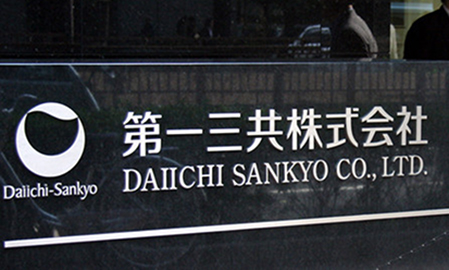Daiichi Sankyo’s latest data release about its Phase III blood thinner edoxaban has failed to wow analysts. Instead, it has prompted speculation that, although the drug will widen the blood-drug wars, its profile won’t ratchet up the tension.
Sanford Bernstein analyst Tim Anderson wrote in a Tuesday research note that he suspects the space will come down to a messaging war, with once-a-day drugs Xarelto and Daiichi’s experimental edoxaban on one side, and twice-a-day offerings like Bristol-Myers Squibb/Pfizer’s Eliquis and Boehringer Ingelheim’s Pradaxa on the other.
The drugmaker rolled out the results at the American Heart Association meeting in Dallas, and said the trials showed the once-a-day blood thinner hit its marks when it comes to non-inferiority to warfarin.
Anderson’s take on the data release was not so much a sigh as a shrug, as he described what he called “fairly lackluster” results in his Tuesday research note. Anderson’s comparison of edoxaban to the recently launched Eliquis indicates why: he points out that compared to warfarin, Eliquis was superior in stroke reduction, superior in safety and had modest mortality benefit, whereas edoxaban looks like an also-ran, scoring points for non-inferiority and mixed mortality benefit compared to warfarin, although it did come out superior in terms of safety profile.
ISI Group analyst Mark Schoenebaum was also underwhelmed by Daiichi Sankyo’s news, finding problems with its failure to hit efficacy superiority and concern that test results indicated a possible association with liver damage among high-dose patients. Schoenebaum’s reaction also leaned heavily on Eliquis. The analyst wrote that his team considers the BMS/Pfizer medication as “the best-in-class warfarin replacement” based on primary efficacy, mortality and bleeding.
Jefferies analyst Jefferey Holford shared a lack of enthusiasm about the data, and his research note indicated Janssen probably won’t have to worry if the once-a-day blood thinner enters the market. Holford writes that Janssen’s advantage is twofold: its “first-mover advantage” of simply being the first once-daily oral anticoagulant to reach market and because “edoxaban needed to be best-in-class to be a serious threat.”
In his Daiichi Sankyo reaction, Schoenebaum also tucked in a key point about the overall class and something that could add heat to new drugs like Xarelto and Eliquis that have failed to upset the category—antidotes. As noted Tuesday, BI released early-trial data about a counteragent for its blood thinner Pradaxa.
Despite FDA assurance that doctors and patients should not consider Pradaxa’s bleeding risk as greater than warfarin, Reuters AHA conference coverage indicates that physicians are not comfortable with this new roster of cardiovascular drugs. “It’s always easier to prescribe a therapy if you feel you have a bailout strategy,” cardiologist Jonathan Piccini told Reuters.







